Thai mercenaries in the American war. Vietnam and Laos
Anti-Communist Citadel
The spread of left-wing ideas in Southeast Asia, from the very beginning was regarded by the Thai elites as a threat to the existence of monarchical Thailand. While in Laos and Cambodia, representatives of monarchist families were at the same time left-wing leaders and headed the transition to a republican form of government (which resulted in civil wars), in Thailand there was a strong national consensus about socialism, communism, and the need to adhere to the traditional monarchic form of government. Seeing the growing popularity of left-wing ideas, both in Thailand itself (limitedly, mainly among ethnic Chinese and Vietnamese), and around, all the leaders of Thailand, periodically replacing each other during coups, relied on cooperation with the United States.
Since the times of Truman and the Korean War, Thailand has become a participant in American military operations against the "communist threat." The communist victory in Vietnam made the Thais fanatical supporters of the United States, ready to deploy American troops on their territory and participate in American operations. The growing influence and power of “Pathet Lao” in Laos and the growing involvement of Vietnam in this country made the Thais even more supporters of harsh measures than the Americans themselves were.
Not surprisingly, Thailand has become one of the first countries in SEATO - the pro-American military bloc in Asia.
The Americans did not remain in debt, and at their own expense built civilian infrastructure in Thailand, for example, roads, and in large, unbearable volumes for Thailand. This stimulated the economic development of the country and further strengthened pro-American sentiments among the local population.
Field Marshal Sarit Tanarat, who came to power in Thailand in 1958, took a place in the American “ranks” at the earliest opportunity. In 1961, the US ambassador in Bangkok, William Johnson, asked Tanarat to place American troops in Thailand for conducting covert operations against Pathet Lao. Such agreement was obtained and Thais struck secret operations with the United States from 1961.
From April 1961, the CIA launched Operation Project Ekrarad, the essence of which was to organize the training of Laotian military in camps in Thailand. President Kennedy also personally made sure that the Thai army allocated for the "project" and its instructors. Moreover, Tanarat ordered that the Americans could recruit personnel of the Thai military to be hired. These people were excluded from the lists of personnel and they went to Laos as instructors, advisers, pilots, and sometimes fighters. There they wore uniforms and insignia of the royal army. The United States paid for all these actions, and in principle, a significant part of Thai military spending.
In this approach, there was nothing new, the Americans trained the Thai National Police (Thai National police - TNP) to conduct special operations in Laos back in 1951, and the Police Aerial Reconnaissance Unit (PARU) was also trained by them conducting aerial counterguerrilla operations. Later, PARU will fight in Laos, secretly, of course. The number of CIA operatives back in the distant 1953 year was equal to two hundred, and by the 1961 year everything was aggravated. After all, the opposition of the left in Laos was in the vital interests of Thailand, which needed a “buffer” between itself and the gaining strength of North Vietnam. At first, however, everything was limited to 60 by the Thais in the royal army of Laos, the raids of PARU and border guards on Lao territory, and the intelligence and training of the Lao in Thai training camps.
The military successes of "Patet Lao" forced to reconsider the situation. The Thais put pressure on the United States, demanding additional security guarantees, and better open intervention in the events. Despite the fact that Kennedy did not perceive Laos as a vital point in the fight against communism, the Thais ultimately achieved their goal and in May the US Marine Corps began to unload 1962 in Thai ports. 18 May 1962, the 6500 Marines landed from the Valley Forge ship on Thai soil. In addition, the United States also deployed 165 special forces from the Green Berets and 84 instructors from other branches of the military. By this time, the Thais had already deployed several thousand soldiers along the Mekong River, in readiness for the invasion of Laos.
US troops did not stay in Thailand for long - after signing a truce in Geneva between the warring parties to the Lao war, Kennedy recalled the troops back. But by that time, the interaction between the Americans and the Thais had already been established at a very high level, the American presence was deployed at the air bases of Korat and Tahli, and American aircraft from these bases were already conducting reconnaissance over Laos and occasionally attacking Pathet Lao. Tahli also became home to the U-2 and SR-71 scouts, as well as to Air America helicopters and helicopters. The entire infrastructure, which allows Americans and Thais to work together, was already established and ready for a “restart”. By the end of 1962, it became clear that the Vietnamese were not going to leave Laos despite the fact that the civil war had subsided there, and that the number of their contingent had already reached 9000 people stationed in the mountainous eastern provinces. The Vietnamese had already created the “Ho Chi Minh Trail”, which was supposed to help them unite the country, and had already delivered supplies for the Viet Cong to the south. Soon the Americans began to consider the possibility of returning to Thailand.
Sarit Tanarat died a few weeks after the Kennedy assassination, but the arrival of the new Prime Minister Field Marshal Tanom Kittikachon did not change anything - cooperation continued and grew. In the 1964 year, when the Americans started Farm Gate project - secret bombing of the Viet Cong and the “Ho Chi Minh Trails” on old combat aircraft, Thai air bases were at their service.
After the Tonkin incident and the open US entry into the war, the Thais "bit the bit." The Thai military together with the Americans prepared the invasion of Laos, the Thai-trained pilots participated in the Lao open war, sometimes allowing themselves to bomb targets for which the Americans did not give consent (for example, Chinese cultural and economic missions, in fact, resident). In addition to Korat and Tahli, the Americans received the Udorn airbase. The number of US Air Force bases in Thailand has grown steadily. In 1965, most of the US sorties against North Vietnam and the Ho Chi Minh Trail were from Thai territory. If at the beginning of 1966 in Thailand there were 200 American planes and 9000 people of the US Armed Forces personnel, by the end of the year there were already 400 planes and 25000 people.
In the spring of 1966, the Americans completed the construction of the Utapao airbase, from which the B-52 Stratofortress began to fly on combat missions. Each such sortie saved US 8000 dollars on a plane when compared with the cost of departures from Guam. From the time of commissioning until the end of 1968, Utapao provided 1500 airplanes against Vietnam every week, and about 80% of all American combat sorties were carried out from Thai bases. With Utapao together there were six such bases.
At the same time, the territory of Thailand was used by the Americans as a large recreation area. If someone does not know, then the tourist sector of the Thai economy began to take shape precisely thanks to the rest of the American military.
Today, historians are unanimous in their opinion that without the help of Thailand, America would not have been able to wage such a war against North Vietnam, which it fought.
Lyndon Johnson, who came to power in the United States after the Kennedy assassination, was not only interested in such support. Back in 1964, he proclaimed the “More Flags” program, the purpose of which was to attract new allies to the Vietnam War. And if Australia openly sent its military contingent to Vietnam, other countries simply rented out their soldiers in exchange for American money. In the list of these countries were South Korea, the Philippines and, of course, Thailand.
The idea of war against communism shook Thai society. It cost Kittikachon to announce the sending of troops to help the US at the beginning of 1966, as volunteers began to besiege the recruiting stations - in Bangkok alone they were recruited 5000 people in the first few months of 1966. The Americans trained these people, after which they organized themselves into combat units and went to the combat zone.
By the end of 1971, two Thais, the "Royal Cobras" and the "Black Panthers", a total of 11000 people, had already fought in South Vietnam, being trained and equipped according to American standards. At the same time, the first Thais arrived in Vietnam much earlier, the first detachments appeared there as early as 1967.
But the Americans had another problem point where people were needed - Laos. The country where they needed to win the local civil war and defeat the Vietnamese newcomers, who maintained their communications with the Viet Cong. And there, in Laos, the Americans needed significantly more people, because in Vietnam they could fight themselves, and they couldn’t invade Laos, this war was “secret”, and so they entered into history. By the 1969 year, when both the Hmongs General Wang Pao and the royalists began to end not only personnel, but also a mobilization resource, the Americans who were in charge of this war faced the question of where to take the living force for this war - as for the actual battles for Laos and for operations against the “Ho Chi Minh Trail”, which became vital for reducing the heat of the war in southern Vietnam.
The source of this manpower was Thailand.
Operation "Unity"
Since the beginning of Lao training in Thailand, the Thai army has created the “333 Division” - the headquarters for coordinating with the Americans. On the part of the latter, the so-called “Special Communication Squad” of the CIA served the same purpose. When the presence of the Thais on the territory of Laos became necessary to expand, these units took over the organization of their preparation and dispatch.
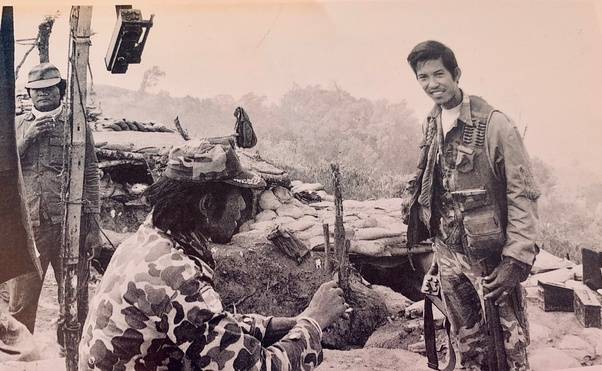
The first sign was the participation of the Thai Army artillerymen, along with their guns in battles on the approaches to the Valley of Jars in 1964, against Pathet Lao (codename of the unit in the American Special Requirement training program 1). Later, in 1969, another special requirement 8 unit fought there, for Muang Sui, against the Vietnamese, and this time without success. These two battalions of artillery (in our terms - two divisions) were the first detachments of Thais who fought in Laos. Then others followed. In 1970, another battalion of artillery, SP9, was deployed to the main base of Lon Chen to help the bloodless Hmongs. Behind him - 13-I regimental group. At that moment, the troops of Wang Pao could be held only at the expense of these people. But the peak of the number of Thais in the Lao war came at the beginning of the seventies.
In the 1970 year, when, as a result of a coup, power in neighboring Cambodia seized Lon Nol, the Thai government gained 5000 fighters to invade this country. But the Americans managed to convince the Thais of the need to use these and other forces not in Cambodia, but in Laos. Soon, a set of additional fighters, their training and use came under the control of the Americans.
Thus began the operation "Unity" - "Unity".
The newly trained Thais were organized into battalions, 495 people each. The term of the contract of the fighter in the battalion was estimated to be one year, then it could be extended. The combat battalions received the Lao commando battalion and the numbers starting with the number “6” - this was the difference in the designation of Thai units from the Lao proper. The first battalions received numbers 601, 602, etc. The preparation of the 601 and 602 battalions ended by the beginning of December of the 1970, and in mid-December they were already thrown into battle. American curators, accustomed to the worthlessness of Lao wax, were pleasantly surprised by the results of Thais attacks.
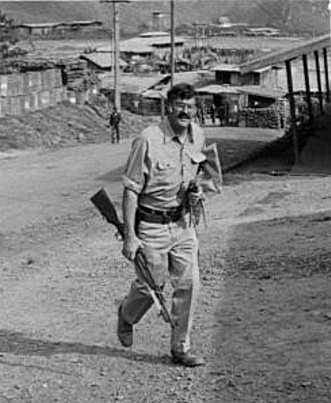
From this point on, both in operations against the “trail,” and in the battles for Laos itself, the role and number of Thais will continuously grow. Wanting to get as many soldiers as possible, the CIA began to recruit people without military experience into training camps. As a result, in June 1971, if the number of Thai mercenary units destined for the war in Laos was equal to 14028 people, then by the end of September, 21413. As royalists and Hmongs diminished the number of personnel, the proportion of Thais grew higher and higher. By the end of 1972, the Thais formed the basis of their troops during any royalist offensive. They now fought under the command of Wang Pao, who literally spent his people in battle. His soldiers took the royalists nowhere.
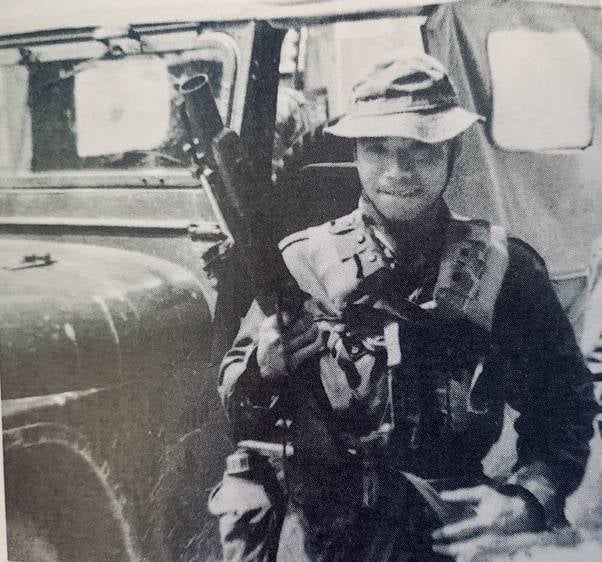
Thais managed a lot. They seriously violated the supply of "Trope". They once again returned to the Hmongs and royalists Muang Sui. In fact, they were the only effective military force that fought against the Vietnamese in Laos. The Hmongs, who could sometimes knock out parts of the VNA from their positions with American air support, were significantly inferior to the Thais in everything. However, everything comes to an end. During the powerful counterattack in the Valley of the Jugs in 1971, the Vietnamese inflicted a heavy defeat on the Thais. For the first time applied to Laos, Vietnamese MiGs cleared the sky for the VNA ground units and provided favorable conditions for an offensive.
Soviet 130-mm guns allowed the Vietnamese to naturally incinerate Thai artillery units. Accustomed to American, Lao and Thai air support, Thais were unable to hold positions when the enemy dominated the sky. The Thais were forced to flee the battlefield, leaving the Vietnamese with about a hundred artillery pieces and a huge amount of ammunition. Nevertheless, having reached the main Hmong base in Lon Chan, they called “rested” and again saved the situation for the Americans. Without these soldiers, the war in Laos would have been won by Vietnam and Pathet Lao at about the end of 1971. With the Thais, she stretched for several more years.
In total, as part of Operation Unity, the Americans prepared the 27 infantry and 3 artillery battalions.
The mercenaries were “in service” before the truce of the 22 signed on February 1973 in February. After that, among the mercenaries, fermentation began, quickly developing into desertion. In the 1973 year, almost half of them fled in search of new employers or just any job. The remaining approximately 10 000 fighters were eventually transferred back to Thailand and dispersed to their homes.
Pilots
Thais played a special role in the air war in Laos. And not so much as pilots (which was also the case and it was important), but as as airborne air guides, Forward Air controllers. Flying on light-engine Cessna as signalmen and letnabs, sometimes with American pilots (also mercenaries) sometimes on their own, Thais made up a significant part of the unit known as the Ravens FAC. This group of advanced air guidance throughout the war provided the American, Royalist and Thai shock Aviation in Laos, accurate target designation and the assessment of the results of airstrikes, also very accurate. Thais, often with minimal flying experience, made a significant contribution to the work of this group.
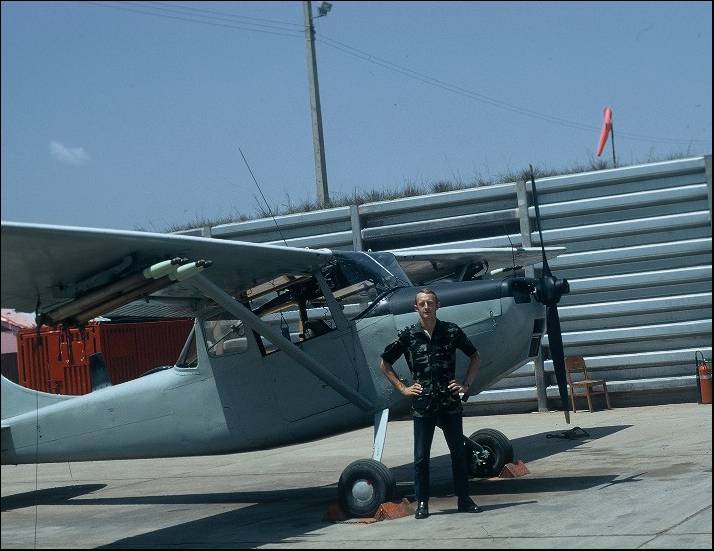
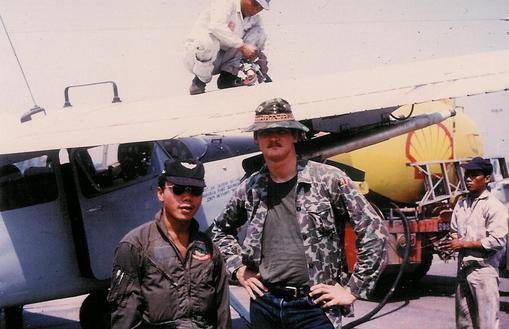
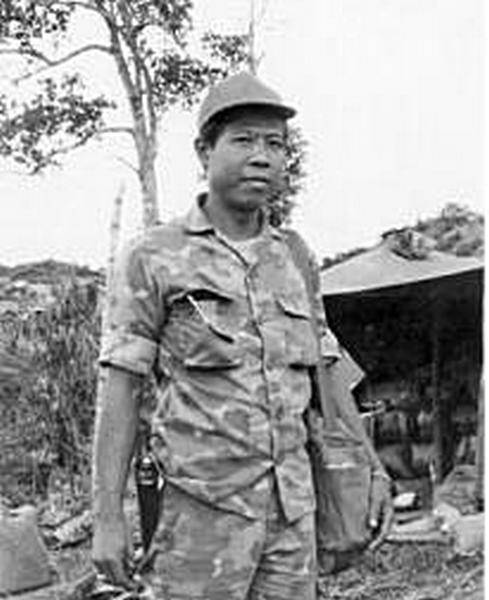
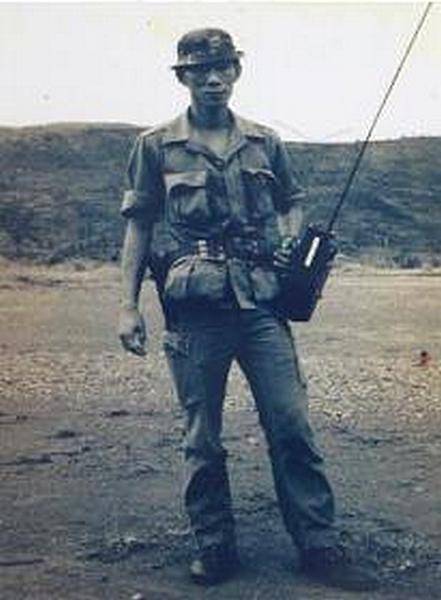
At the same time, the Americans also taught pilots who not only provided royalists in Laos with air support, but also participated in Thailand’s own war with Chinese influence in the region.
From 1971, several UH-1 helicopters were also piloted by Thai pilots trained by the Americans.
In conclusion, it should be said that the mercenaries fought even when their own government was already negotiating with Vietnam and groping for contacts with China.
The Americans tried to keep the operation "Unity" in secret. Thais did not appear anywhere under their own names, they were recorded by nicknames; when they entered the hospital, they were registered as “John Dow 1”, “John Dow 2”. To this day, studies like photos of Thai mercenaries have written something like Battleship, Sunrise, and the like instead of names.
Conclusion
Thailand received tremendous economic benefits from American assistance. The level of development that this country has today is due to the huge money that the US has invested in Thailand for supporting the war against Vietnam. In fact, for Thailand, the American war turned out to be advantageous - it strengthened it, without demanding anything in return, except for a few hundred dead. Even from a military point of view, Thailand came out of it more than it was - a lot of experienced soldiers returned from the war, and the Americans transferred a lot of military equipment to Thailand.
There is, however, one "but." If the Thai veterans of Vietnam in the country, as they say, “in honor”, then those who fought in Laos are forgotten and are not interesting to anyone except themselves. However, it is precisely this fact that hardly matters for anyone except themselves.
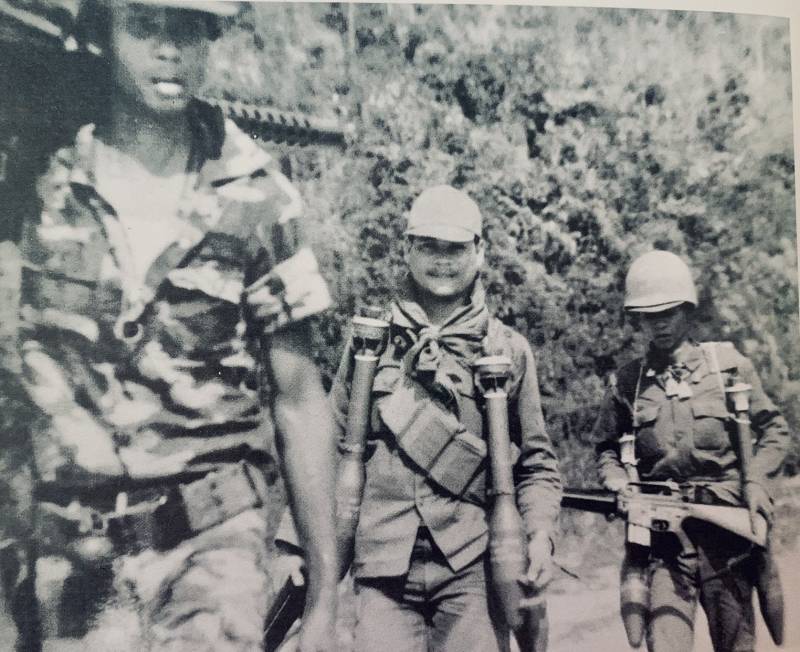
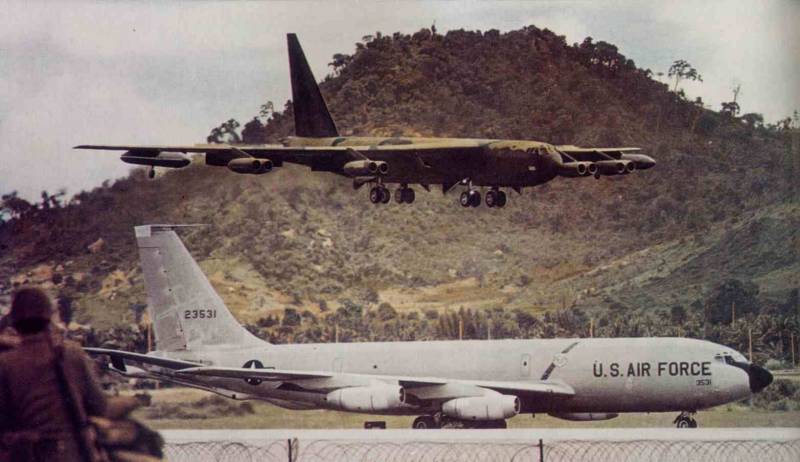
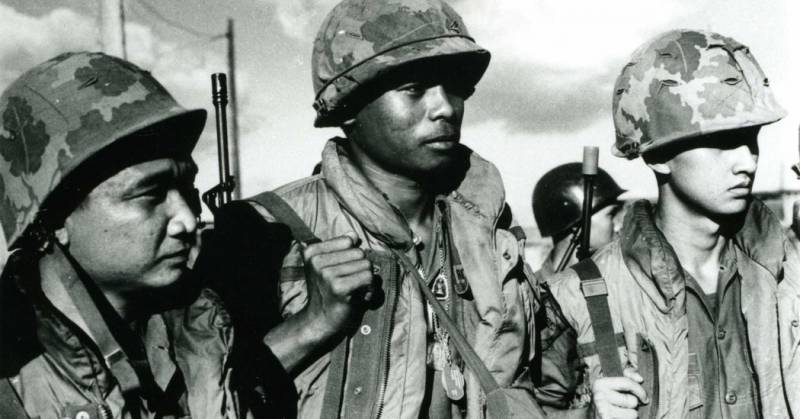
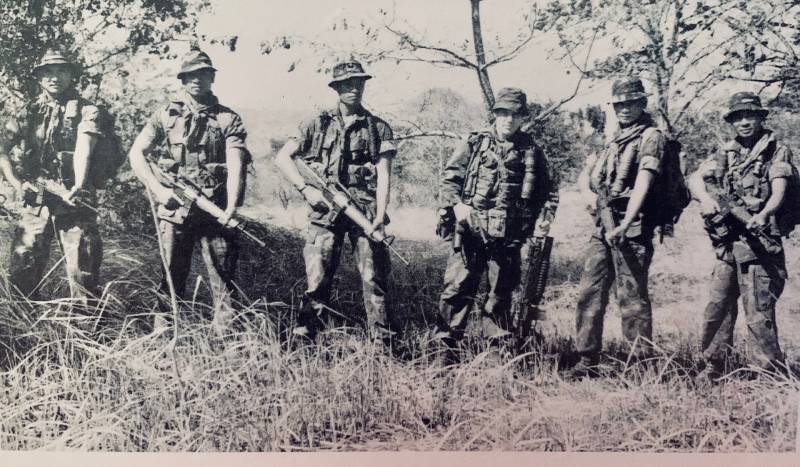
Information